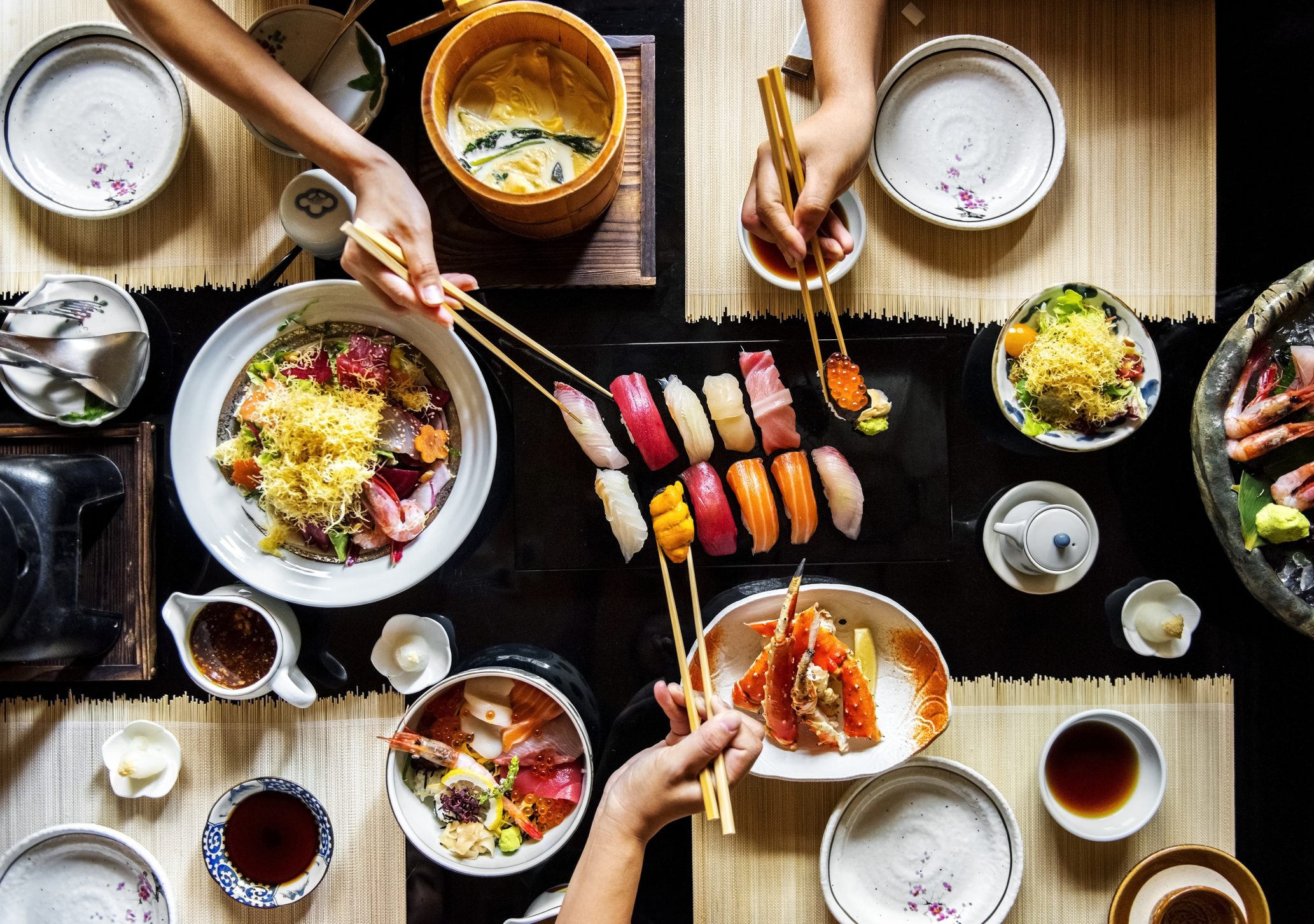The 10 Sushi Etiquette Rules You Must Follow When You’re Eating at a Japanese Restaurant
Sushi bars are popular dining spots, and understanding the etiquette can enhance your experience. Greet with a friendly "Irasshaimase," and consider ordering "omakase" to let the chef choose your dishes. Use your hands for nigiri and chopsticks for sashimi. Lightly dip sushi in soy sauce fish-side down and avoid mixing wasabi. Eat sushi in one bite, cleanse your palate with ginger, and tip according to local customs. Enjoy your meal respectfully and savor the authentic experience.

Sushi bars and restaurants have taken the culinary world by storm, becoming a beloved choice for both dinner and lunch. The allure of fresh, artfully prepared sushi has captured hearts and taste buds globally. Despite the often relaxed and casual atmosphere of these eateries, you might find yourself pondering if there are any particular rules you should follow. After all, sushi, with its rich cultural heritage, comes with its own set of dining etiquettes. Fear not! We're here to guide you through the nuances of dining at a sushi restaurant, ensuring you enjoy your experience to the fullest without any faux pas.
1. What to Say When You Arrive
As you step into a sushi restaurant, be prepared to be greeted with a resounding "Irasshaimase!" which means "Welcome!" in Japanese. Don’t worry if you can’t pronounce it perfectly; a friendly nod and smile will suffice. This acknowledgment not only shows respect but also sets the tone for a pleasant dining experience. It’s like saying, “Hello, I’m here to eat copious amounts of delicious fish, and I’m going to enjoy every second of it.”
2. How to Order Sushi Like a Pro
Faced with an extensive sushi menu, it’s easy to feel overwhelmed. But here’s a tip: trust the chef. Opt for "omakase," which translates to "I'll leave it up to you." This allows the chef to present you with the freshest and most exquisite selections of the day. Think of it as a culinary adventure where every dish is a delightful surprise. Plus, it saves you from the paralysis of choice – a win-win situation!

3. Chopsticks or Hands? The Eternal Debate
To chopstick or not to chopstick, that is the question. When it comes to traditional nigiri sushi (those lovely fish-on-rice pieces), it’s perfectly acceptable to use your hands. In fact, using your fingers can be a more authentic experience. Sashimi, on the other hand, should be enjoyed with chopsticks. So, flex those chopstick skills, but don’t be afraid to get a little hands-on.
4. How to Properly Handle Wasabi and Soy Sauce
Ah, sauces. They can be a bit of a minefield. First and foremost, avoid the temptation to drench your sushi in soy sauce. A light dip is all you need. For nigiri, flip the piece so the fish side makes contact with the soy sauce, preventing the rice from absorbing too much and falling apart. As for wasabi, resist the urge to mix it into your soy sauce. Instead, place a small amount directly on the fish if the chef hasn’t already done so. It’s sushi, not a wasabi flood.
5. Never Forget About the Ginger
Those thin slices of pickled ginger aren’t just there for decoration. They serve a vital role as a palate cleanser. Between different pieces of sushi, enjoy a slice of ginger to refresh your taste buds and prepare them for the next delightful bite. Think of it as hitting the reset button for your mouth.

6. Should I Eat Sushi In One Bite?
Sushi is designed to be a one-bite wonder. Each piece is crafted to deliver a perfect balance of flavors and textures in a single mouthful. Biting it in half can disrupt this harmony and might get a bit messy. So, take a deep breath and pop that beautiful creation into your mouth in one go. Your taste buds will thank you.
7. What About Hot Food Like Soup or Green Tea?
Sushi often comes with a side of miso soup and a cup of green tea. These aren’t just accompaniments; they’re integral parts of the meal. Sip your soup directly from the bowl – no spoon necessary – and use the provided lid to keep your tea warm. It’s all part of the authentic experience.
8. Can I Speak Talk to The Chef?
If you’re seated at the sushi bar, feel free to engage with the chef. A bit of friendly banter is welcomed, but remember to be respectful of their craft and their time, especially during busy hours. Complimenting the chef with a simple "oishii" (delicious) can go a long way in showing your appreciation.

9. What's The Tipping Etiquette in a Sushi Restaurant?
Tipping practices can vary depending on where you are. In many sushi restaurants outside of Japan, tipping follows local customs. In the United States, for example, leaving a 15-20% tip is standard. However, in Japan, tipping is not customary and can even be considered rude. If you’re dining in a Japanese establishment abroad, it’s best to follow the local tipping etiquette. When in doubt, err on the side of generosity – it never hurts to be kind.
10. How to Take Care of The Bill
When it comes time to settle the bill, avoid placing money directly in the chef’s hand. Instead, use the small tray or envelope provided. This is a subtle but important gesture of respect. After all, you want to leave on a high note, not a faux pas.




